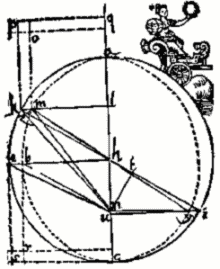Or search by topic
Number and algebra
Geometry and measure
Probability and statistics
Working mathematically
Advanced mathematics
For younger learners
Published 2011 Revised 2022
The Moving Planets
Since people first looked up and wondered what the lights in the sky were, we have tried to solve the mysteries of the stars and planets. Mathematics has always been a powerful tool for studying, measuring and calculating the movements of the planets. So mathematics was used to both discover, then prove the first basic `rule' of our planets - that they travel around the sun, not around Earth. In
the 1500's and 1600's, now famous men such as Nicolaus Koppernik ( Copernicus ), Isaac Newton and Galileo Galilei worked hard to convince the authorities of this truth.
Between 1609 and 1618 Johannes Kepler announced his laws of planetary motion. Using the careful observations recorded by Tycho Brahe , he showed that the shape of a planet's path around the sun (orbit) was an ellipse (almost a circle). He calculated the
speed that each planet travelled. He also worked out the relation between size of the orbit and the time it takes for the planet to go once around the sun (revolution).

Eclipse of the Sun
You may also like
Eclipses of the Sun
Mathematics has allowed us now to measure lots of things about eclipses and so calculate exactly when they will happen, where they can be seen from, and what they will look like.
Shaping the Universe I - Planet Earth
This article explores ths history of theories about the shape of our planet. It is the first in a series of articles looking at the significance of geometric shapes in the history of astronomy.
Shaping the Universe II - the Solar System
The second in a series of articles on visualising and modelling shapes in the history of astronomy.

